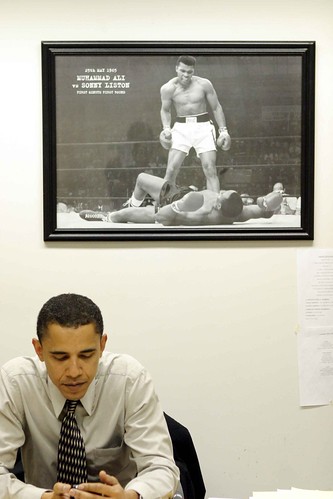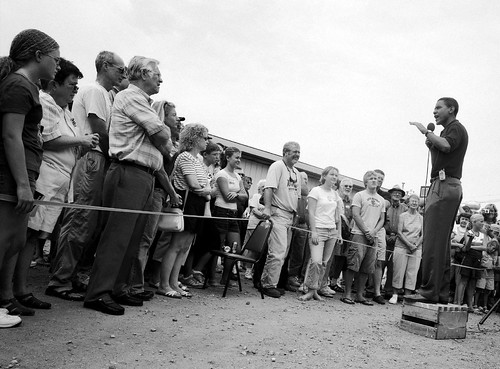First, Kotkin notes some trends and makes assertions that I don't dispute:
- People who moved into dense urban centers like SF and NYC in their twenties are moving out to suburbs and exurbs. While I don't have the data, I can't dispute this. People get older, people have kids, people want to own not rent, people want more space, a backyard, a garden, a lawn. This is certainly deeply buried in the American psyche, if not a fundamental desire of wealthy societies. What is more suspicious, or perhaps just curious, is if these emigrating 30-somethings aren't being replaced by an equal crop of 20-somethings (particularly given that the 20-something echo-boom cohort should be larger than their elders). My experience in New York doesn't signal this to be true. 30 somethings may be leaving the city but they are being replaced by 20 somethings -- and the city is growing both denser and sprawling outwards. But if it is a trend, that as a generation is leaving the cities, they are not being replaced, then why is a fascinating question.
- People actually enjoy living in the suburbs, more than in cities. I think this is entirely plausible, although I would guess that most of the studies that find this to be true are asking questions that pose false choices. For example, asking whether people are more likely to identify their suburban neighborhood as "home," where they have settled down for the rest of their lives, versus an urban neighborhood, where some significant portion of the population will be necessarily moving on at some point in their lives doesn't make a lot of sense. Perhaps a more telling question would be to find out whether those "lifers" who have chosen to live suburban and urban areas have stronger identifications with their homes. I've got a good idea what Brooklyners and New Yorkers would say, even through their complaining and misery.
- People are moving to suburbs and the SunBelt for job opportunities. Fair enough, I imagine the economic data sees this through.
- People are moving to suburbs and exurbs because they get more value for their money. Undoubtedly.
Where I think Kotkin's article weakens is in failing to address the following questions:
- First, the too-cute opening gambit of the article, that the "increasingly trendy theory holds that the ticket to attracting and retaining the educated and upwardly mobile is a big dose of urban cool" doesn't hold up is neither proved nor dis-proved by any of the data or studies that Kotkin cites. In fact, I'm quite sure that the increasing availability of much of the consumable elements of urban cool being readily available in suburbs and exurbs (thanks to Starbuck's, an increasingly de-centralized retail economy, urban planning efforts by smaller municipalities) makes the move to the suburbs a much softer landing for ex-urbanites. You can still get a good latte. You can have your books and CDs delivered to you by Amazon.com. So those creature comforts that a city could offer become less valuable.
- Second, the same argument above I think mis-represents the premise of cities investing in "urban cool." It is not that cities don't need to invest in energizing their cores to draw in residents - they certainly do. The problem is, even when doing so, dense cities still may lose out to suburbs and exurbs. So cities need to figure out how to address other issues - like becoming more kid friendly, creating more opportunities for young families to own property, and providing better access to open space and green space. Otherwise, what's the alternative? Should cities dismantle their infrastructure and orient themselves to suburban development? I feel like we've seen that movie before...
- The biggest question I have is if the economic and demographic growth that Kotkin cites stimulates the kind of innovation that the "Creative Class" is responsible for, and which allows for sustained growth in the long term? In the Bay Area, the increasingly sprawling and exurban Silicon Valley has been effective at driving technology innovation in the last thirty years. At the same time, cities throughout Silicon Valley, from San Jose to Palo Alto to San Francisco to Oakland to Danville have invested in bringing some elements of "urban cool" into their neighborhoods. And New York's recent resurgence is surely spearheaded by the twin draws of an incredibly engaging and active city life paired with an increasingly safe, clean, and in some respects, suburbanized Manhattan. I have less experience with Phoenix or Houston but I would be curious to see what the patterns of innovation are with respect to economic and job growth. Are the economies in these region creating the sorts of new products and services that can motivate and sustain the rest of the economy? Or is the regional growth in these areas simply the scaling of innovation (i.e., no longer the locus of innovation, but places where cheaper capital, labor, and operating expenses allow for more efficient scaling of product and service delivery) happening in other areas?
- A final quibble is that I think Kotkin falsely suggests that people move to suburbs, exurbs, and Sunbelt cities because of job opportunity. It is not as if jobs are natively growing in those regions - except perhaps in the energy sector. Rather, I think a more fair assertion would be that both job growth and demographic shifts are occurring because these regions offer competitive advantages in terms of capital, labor, and resource costs -- to both individuals and families, and to industry.
All in all, I don't take issue with most of Kotkin's positions. The demographic trends and assertions that follow-on make sense. It seems a perfectly plausible explanation of what is happening. The question, as always, is if what is happening is what should be happening. Are the outcomes of increased growth, economic and demographic, in suburbia, at the expense of dense cities good for cities in the long run - either those being left behind or those being choked by sprawl and outward development? Are those outcomes the best way for fostering innovation in the economy? Does suburban life make people happier in the long run, compared to investing in vibrant cities? Does it create a sufficiently common set of experiences and interests to maintain and enrich a national character? The answer to all of these may be yes, they may be no, but I think they are vital questions to ask before suggesting that the investment in vital urban life is a failed policy.
















